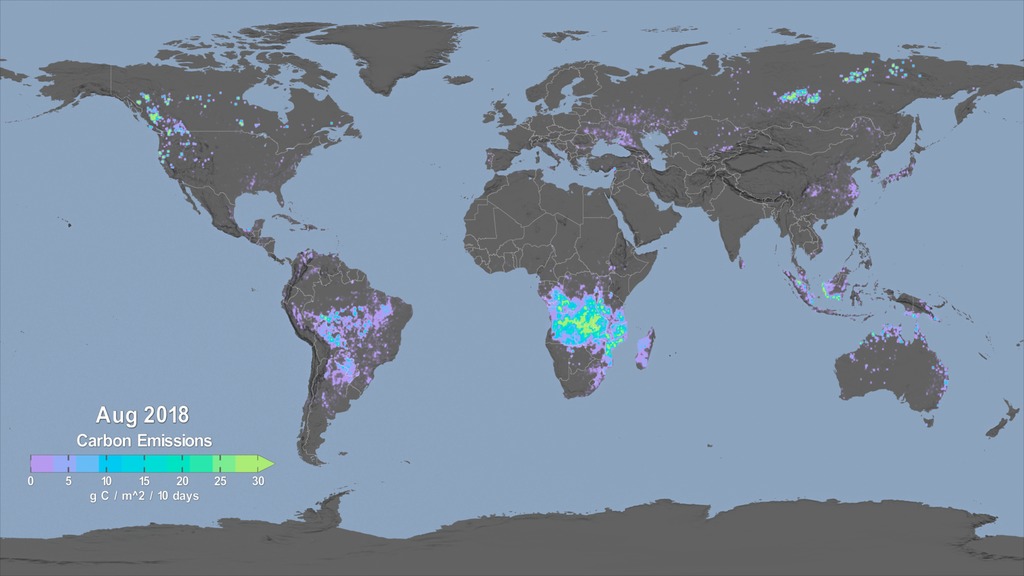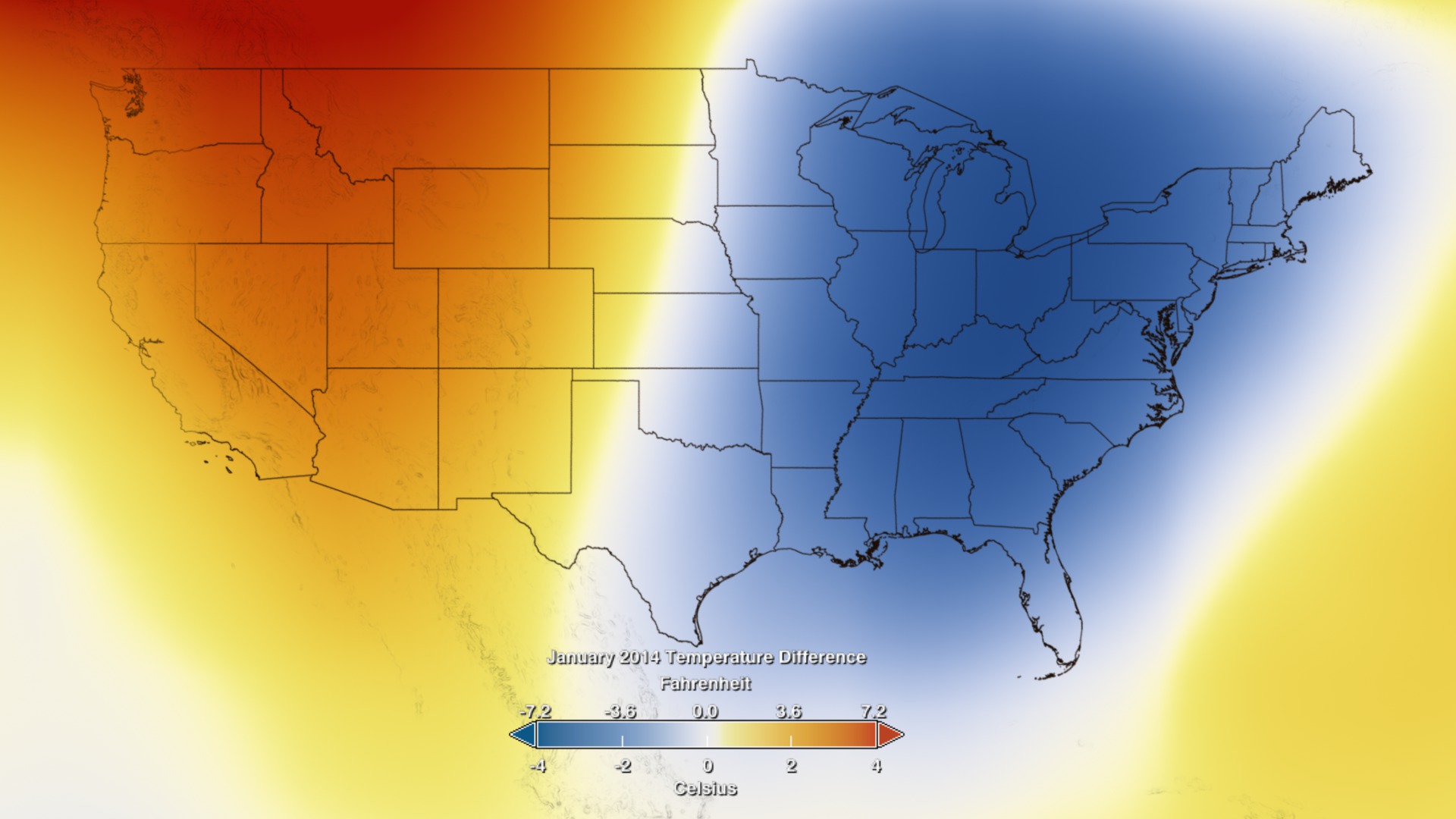June 2019 Monthly Global Temperature Anomalies
While many people in the continuous United States saw average temperatures in the month of June 2019, the average global temperature in June was 1.71 degrees F above the 20th-century average of 59.9 degrees. This makes June 2019 the hottest June in the 140-year record. Nine of the 10 hottest Junes have occurred since 2010. Last month also was the 43rd consecutive June and 414th consecutive month with above-average global temperatures. This visual of the GISTEMP anomalies for June of 2019 show the United States and then zooms out to show the global picture. Temperature anomalies indicate how much warmer (red) or colder(blue) it is than normal for a particular place and time. For the GISS analysis, normal always means the average over the 30-year period 1951-1980 for that place and time of year. For more information on the GISTEMP, see the GISTEMP analysis website located at: http://data.giss.nasa.gov/gistemp/
June 2019's average global land and ocean temperature was the highest for June since records began in 1880. Alaska had its second warmest June since statewide records began in 1925. Europe, Africa, and South America had their warmest June on record. In the contiguous United States, above to much-above-average precipitation was observed across parts of the Mississippi and Ohio Valeys and along much of the East Coast.

Monthly Global temperature Differences in the contiguous United States and Alaska.
Alaska had its second warmest June since statewide records began in 1925.

June 2019 Global Temperature Difference in both Degrees Fahrenheit and Degrees Celsius

June 2019 Monthly Global Temperature Difference without the colorbar

June 2019 Monthly Global Temperature Temperature Difference with colorbar overlay
Credits
Please give credit for this item to:
NASA/Goddard Space Flight Center Scientific Visualization Studio
Data provided by Robert B. Schmunk (NASA/GSFC GISS)
-
Animator
- Lori Perkins (NASA/GSFC)
-
Scientists
- Gavin A. Schmidt (NASA/GSFC GISS)
- Robert B Schmunk (SIGMA Space Partners, LLC.)
- Reto A. Ruedy (SIGMA Space Partners, LLC.)
- Kwok-Wai Ken Lo (SIGMA Space Partners, LLC.)
- Makiko Sato (Columbia University, Center for Climate Systems Research)
-
Project support
- Robert B Schmunk (SIGMA Space Partners, LLC.)
-
Writer
- Patrick Lynch (Wyle Information Systems)
Release date
This page was originally published on Thursday, August 8, 2019.
This page was last updated on Wednesday, May 3, 2023 at 1:45 PM EDT.
Series
This visualization can be found in the following series:Datasets used in this visualization
-
GISTEMP [GISS Surface Temperature Analysis (GISTEMP)]
ID: 585The GISS Surface Temperature Analysis version 4 (GISTEMP v4) is an estimate of global surface temperature change. Graphs and tables are updated around the middle of every month using current data files from NOAA GHCN v4 (meteorological stations) and ERSST v5 (ocean areas), combined as described in our publications Hansen et al. (2010) and Lenssen et al. (2019).
Credit: Lenssen, N., G. Schmidt, J. Hansen, M. Menne, A. Persin, R. Ruedy, and D. Zyss, 2019: Improvements in the GISTEMP uncertainty model. J. Geophys. Res. Atmos., 124, no. 12, 6307-6326, doi:10.1029/2018JD029522.
This dataset can be found at: https://data.giss.nasa.gov/gistemp/
See all pages that use this dataset
Note: While we identify the data sets used in these visualizations, we do not store any further details, nor the data sets themselves on our site.


